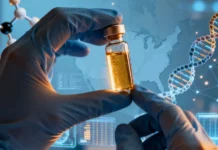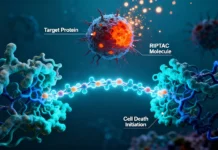Stem cell therapy has emerged as one of the most promising medical advancements of the 21st century, offering individuals hope for healing, regeneration, and improved quality of life. But how does this ground breaking treatment actually work at the individual level? To understand that, it’s important to explore what stem cells are, how they’re used in therapy, and what individuals can expect from the process.
Understanding Stem Cells
Stem cells are unique in that they have the potential to develop into many different types of cells within the body. Unlike other cells, they can divide and renew themselves over long periods. There are two main types used in therapy: embryonic stem cells and adult (or somatic) stem cells. Most clinical applications today use adult stem cells, particularly mesenchymal stem cells (MSCs), which are typically harvested from bone marrow, fat tissue, or umbilical cord blood.
Personalized Healing and Regeneration
At its core, stem cell therapy involves introducing these powerful cells into an individual’s body to repair, replace, or regenerate damaged tissues. For instance, in cases of joint damage, such as from osteoarthritis, stem cells can be injected directly into the affected area. There, they help reduce inflammation, promote the regeneration of cartilage, and support the body’s natural healing processes.
One of the most remarkable aspects of stem cell therapy is its personalization. Each individual receives treatment based on their unique medical history, condition, and response to the therapy. This tailored approach allows for optimized outcomes, often with fewer side effects compared to traditional treatments like surgery or long-term medication use.
Conditions That Benefit from Stem Cell Therapy
Stem cell therapy has shown promise for a wide range of conditions, including:
- Orthopedic issues like knee, hip, and shoulder injuries
- Degenerative diseases such as Parkinson’s or Alzheimer’s
- Autoimmune disorders like lupus and multiple sclerosis
- Cardiovascular diseases
- Certain types of diabetes and associated complications
As research continues, the list of treatable conditions is expected to grow, making this therapy increasingly accessible and relevant to a broader patient population.
What to Expect from Treatment
For the individual, the process typically begins with a consultation and thorough evaluation. Once a personalized plan is created, stem cells are collected—either from the individual (autologous therapy) or a donor (allogeneic therapy)—and then prepared in a lab. The cells are then reintroduced into the body, often through injection or infusion, depending on the condition being treated.
Recovery times can vary, but most patients experience minimal downtime. Many report noticeable improvements in symptoms within weeks, with continued progress over the following months. Since the therapy is designed to support the body’s natural healing, results tend to be gradual but sustained.
Finding a Trusted Provider
Given the complexity and evolving nature of stem cell therapy, it’s crucial to work with experienced and reputable providers. Clinics that prioritize science-backed protocols, patient education, and individualized care are essential for ensuring safe and effective treatment.
If you’re exploring options for stem cell therapy, consider https://auragens.com/, a trusted provider offering innovative, patient – centered regenerative medicine solutions. Their commitment to high-quality care and advanced treatment methods makes them a valuable resource for those seeking lasting relief and restoration.
Final Thoughts
Stem cell therapy represents a powerful shift toward personalized, regenerative care. For individuals facing chronic conditions or seeking alternatives to invasive procedures, it offers real hope. With the right provider and treatment plan, stem cell therapy can be a transformative journey toward healing and improved well-being.




















